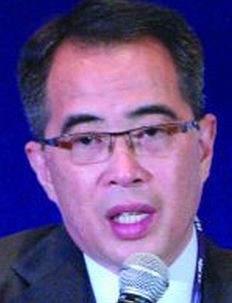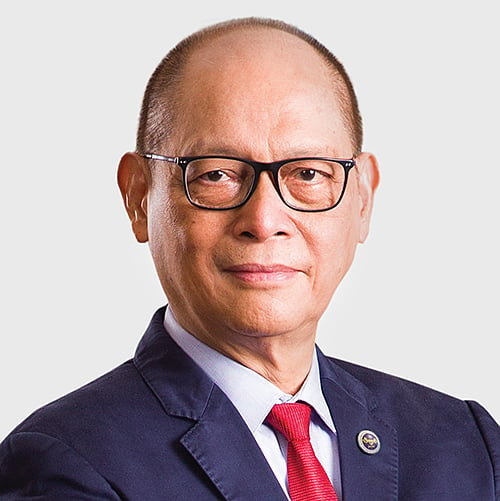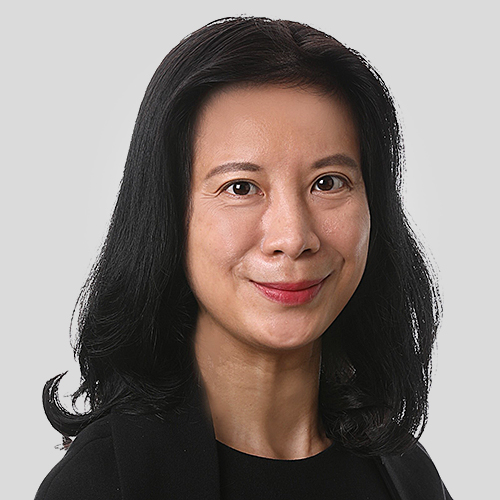 |
|
| Opulencia: We could have priced the bond tighter |
In its latest fund-raising, one of the Philippines’ leading conglomerates has demonstrated its flair for innovation with a landmark transaction designed to raise long-term financing from retail investors.
Ayala Corporation on May 12 closed a 10-year bond offering amounting to 10 billion pesos (US$233 million) with multiple put options on the fifth year and on the eight year. The is- suer-driven deal carries an interest rate of 6.80%, to be paid quarterly, with the pricing based on the 15-day average of the Philippine Dealing System Treasury Rate (PDST-R2), plus a spread of 30bp. This is closer to the high end of the marketing range of between -25bp and 45bp.
The pricing level was consistent with the auction results on April 25 for the 10-year fixed rate treasury notes, which had a rate of 6.50%. “It is a fairly priced deal, considering that our target market is retail investors,” comments Ayala treasurer Ramon Opulencia. “We could have priced the bond tighter and still achieved a successful offering, but that would have changed the investor mix with more institutional investors buying into the bond at the expense of the retail base.”
Ayala uses the PDST-R2 bench- mark, which is based on completed deals, in pricing its transactions since it considers it as more transparent for the market and for issuers as opposed to the other benchmark PDST-F which is the calculated average of the best firm bid rates and is commonly used for other corporate issues.
The bond structure provides two liquidity features, first through the 20% partial put option on the fifth year and subsequently the 100% full put option on the eight year. This is to encourage investors to invest beyond the usual five-year tenor, which is considered their comfort zone.
“We want to provide the retail investors liquidity features built into the structure,” says Opulencia. “While trading itself provides liquidity to the instrument, our experience is that the bonds issued by Ayala are usually not traded because the investors hold onto them. This is due to the lack of alternative investment outlets in the market and to the goodwill that Ayala has built among the investors.”
As an incentive for going on longer tenor, investors get a better rate compared with the five-year rate of about 1.5%, with an option to hold on to the same rate up to 10 years. “Retail investors are more loyal and our view is most of them will not put and would hold onto the bonds until maturity even in spite of the changes in interest rates because of very limited long-term outlets in the market,” says Opulencia.
He adds: “This is probably the simplest of the multiple puts variation that can be offered and our consideration is simplicity in the secondary market trading. We could have made it even more appropriate to address our requirement, for instance, by making the put option on the eight year also partial, say 50%. But because of the implication of such a structure on the secondary market trading to the retail investors, we just simplified it.”
With the partial put structure, the bond is the first multiple put bond in the market and possibly in the region, in what is another trailblaizing initative from Ayala. It is also the first corporate issue for 10 years for a size of 10 billion pesos. The bond likewise has the lowest coupon rate for such a size of an offering. The previous 10-year issue by San Miguel Brewery for 2.81 billion pesos in April 2009 had a coupon of 10.50% and was priced at a spread of 250bp over the PDST-F.
Gearing funding for the long term
The latest bond offering is an offshoot of the first peso-denominated puttable bonds that Ayala arranged in May 2010. That deal, equally for 10 billion pesos, offered a unique way for the company to price a seven-year instrument based on the five-year maturity.
Proceeds from the latest offering will be used to refinance Ayala’s preference B shares amounting to 5.8 billion pesos with a yield of 9.4578%, whose call option was exercised by the company for payment in July this year. The balance will be used to finance Ayala’s working capital requirements.
In its annual stockholders’ meeting on April 18, Ayala chairman and CEO Jaime Augusto Zobel de Ayala disclosed that the companies within the group are raising their capital expenditures to 79 billion pesos in 2011, or 21% higher than what they spent last year. The bulk of these investments is directed towards its domestic businesses, particularly in real estate, telecommunications, water and banking, as well as new investments in the power and infrastructure sectors.
In 2010, Ayala formed a joint venture with Mitsubishi Corporation under PhilNewEnergy Inc to develop solar power plants in select sites in the Philippines. Early this year, it acquired a 50% stake in Northwind Power Corporation, which operates a 33 MW wind farm in Bangui in the northern province of Ilocos Norte, the first wind farm established in Southeast Asia.
“As we go towards more long-term investments, it is important that we should gear up our funding for this type of duration,” says Opulencia. “This structure is a well-thought out process and tries to achieve a retail yield curve over the long-term for Ayala. Our objective is to be able to go back to the market with longer tenors in significant sizes.”
With an indicative demand of 23 billion pesos, Ayala decided to give more focus towards the re- tail investors, allocating 93% of the bonds to them, and only 7% to qualified institutional buyers (QIBs). Originally, it was intend- ed that 85% of the bonds will be allocated to retail investors and 15% to QIBs.
Ayala put a cap of 30 million pesos on the amount of bonds to which each investor can subscribe so as to ensure a more even spread across the few institutional investors. It has also implemented a “return of fees scheme” if the target distribution to retail investors is not met by the underwriter.
The deal was launched after the Bangko Sentral ng Pilipinas (BSP), the central bank, raised the policy rates by 25bp on March 24 – the first time since July 2009 – bringing the overnight borrowing rate to 4.25% and overnight lending rate to 6.25%. This followed the country’s inflation rate climbing to a nine-month high of 4.3% in February. Since the deal launch, the BSP again raised rates on May 5, by another 25bp, as the inflation rate accelerated to 4.5% in April.
“Focussing on the fact that retail investors demand special attention, we really wanted to launch this offer- ing when the interest rates have corrected and stabilized because we do not want to burn the retail investors,” Opulencia explains. “We believe this was the best time to launch the deal as the current interest rates reflect optimal value for investors for a 10-year investment horizon. It already manifests an upward adjustment from the previous low level, making retail investors confident in locking in higher rates by going long term.”
BPI Capital Corporation is the is- sue coordinator for the deal as well as a joint underwriter, along with BDO Capital Corporation, Citicorp Capital Philippines, First Metro Investment Corporation, HSBC, ING Bank (Manila branch), RCBC Capital Corporation and Standard Chartered Bank.
The Philippine Dealing and Ex- change Corporation (PDEx) has approved Ayala’s application to list the bond, which the company says shall widen the reach of price discovery and transparency for the issue and enables participation across all mar- kets on PDEx.
The deal was assigned the highest issue credit rating of PRS Aaa by the Philippine Rating Services Corporation, reflecting Ayala’s strong capacity to meet its financial commitment on the obligations. The rating primarily considered Ayala’s highly diversified and generally self-sustaining investment portfolio, consisting of leading companies in various industries with relatively positive growth prospects.
Ayala is predominantly a peso- based company. In the past, it would tap the offshore market to fund its requirement because the domestic mar- ket was very thin. “At its peak, 90% of our debt was denominated in US dollar,” Opulencia explains. “In 2004, we shifted our strategy to focus more on Philippine peso funding to manage the risk of dependence on foreign currency borrowing. Our forward looking strategy of tapping the domestic market was proven correct when the financial crisis of 2008 impacted practically most companies, but left Ayala insulated.”
As Opulencia points out, dollar ob- ligations entail the sourcing of US dollar to pay off the obligations. Borrow- ing in US dollar also requires hedging as Ayala’s policy is to keep its foreign borrowings covered from foreign ex- change fluctuations.
“Hedging in the Philippines can be volatile and expensive,” he says. “The market is not deep enough for big volumes and may even be unavailable especially for the longer dated loans.”
Over time, the domestic capital markets has expanded to include non- traditional lenders of pesos such as the retail market and the insurance companies. “We have taken advantage of these lenders and have actually tapped them for our requirements, thereby contributing to the development of the local capital markets,” says Opulencia. “We are now in that stage where we are lengthening the appetite of this investor base to be more comfortable with tenors beyond 10 years.”
While Ayala puts emphasis on the domestic capital markets to raise fund- ing, tapping the offshore market has al- ways been part of its strategy of aiming to create a highly flexible approach to finance the company’s needs. “We ensure that we always have multiple fund- ing options positioned in various mar- kets using a variety of products,” says Opulencia. “It is not compelling at the moment for us to tap the offshore bond market. The domestic market provides better strategic value in terms of lower cost, longer tenor and bigger issue size, all in pesos, our natural currency.”
However, before launching the multiple put bonds, Ayala closed two US dollar term loans, of which one was a club deal type syndicate facility, totalling US$410 million in December 2010 and February 2011.
These loans were benchmark- setting as Ayala was able to extend the average life of its US dollar term loans up to six years, with a long availability period of 18 months. They were priced at an all-in rate of around 150bp over Libor when the prevailing market was around 200bp.









